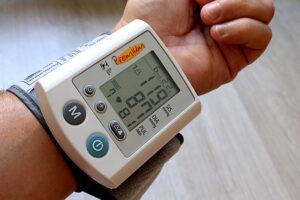 The topic of a smart city and how it should be implemented is one of the most discussed today. The problem is everyone understands something different by this term. However, all people agree on one thing — the advent of the era of “smart cities” is inevitable and fiber optic solutions play a crucial role in it.
The topic of a smart city and how it should be implemented is one of the most discussed today. The problem is everyone understands something different by this term. However, all people agree on one thing — the advent of the era of “smart cities” is inevitable and fiber optic solutions play a crucial role in it.
First of all, the smart city is a modern urban management system, convenient transport, efficient fiber optic solutions, developed internal procedures of the urban environment. They also include modern channels of interaction with residents, infrastructure, big data, etc.
Additionally, the smart city is a big amount of data that is structured, accessible, and properly secured. When these factors are combined and managed, then the smart city will appear.
Components of smart cities
The elements of the smart city, in general, contain smart energy, a resource supply system, smart transport and security system provided by fiber sensors, a system of social services, and urban management. Only when all these parameters come together, this is a full-fledged smart city, not its elements.
In the smart city concept, the conventional infrastructure of housing and utilities is equipped with modern fiber optic sensors. Herewith, controllers and video cameras, connected to broadband networks and integrated with a platform for data collection and processing are installed too. All this data is analyzed and allows achieving great efficiency and optimization of city services and local businesses, whether it is the expenditure of resources or the management of passenger traffic.
In theory, everything looks simple, but in reality, there are a lot of obstacles. Those who develop the ideology of a smart city have to face a lot of barriers, both typical for large IT projects and individual ones. This fact seriously complicates the process. Cities must meet one common requirement to become smart: to collect reliable information (from fiber optic sensors). Based on data it is possible to develop fiber optic solutions for the long term because data is crucial in our time. If you integrate fiber sensors into the city’s infrastructure and create new data collection points — including from citizens with their mobile devices — the smart city administration will be able to analyze big data to more accurately track and predict what is happening. This is also evident in the deployment of communication systems: local fiber optic networks, municipal Wi-Fi, specialized applications for specific tasks (smart parking, street lighting, waste disposal, and recycling).
As already mentioned, the concept of a smart/safe city includes components from a wide variety of areas of life. Moreover, the consumers of these elements are both business and government organizations, as well as the residents of cities themselves.
Fiber sensors as a component of smart transport
In large cities, we are used to applying intelligent traffic analysis and route planning services. These services are based on fiber optic solutions for the collection and processing of data on vehicle movement. Nevertheless, the concept of smart transport is much broader.
Equipping vehicles with location and speed fiber sensors, as well as video cameras, allows solving a variety of tasks. For example, they provide security to logistics management. Fiber optic sensors allow detecting where the car is, what it does and how it can plan its further route.
The development of smart transport will lead to the emergence of a full-fledged autopilot for private cars. However, there are a lot of technological and legal issues to be resolved, so whether this will happen shortly is not clear.
Smart fiber sensors for security
One of the most popular and well-developed features of smart cities today is the security (in the context of protection from crime). The streets of cities around the world are equipped with video surveillance cameras connected to a single fiber optic system for collecting and processing information, which reduces the volume of crimes. But video surveillance is just one part.
Smart policing is an attempt to transform a familiar service into a more effective law enforcement tool in the face of increasing population density. There is a huge layer of fiber optic technologies that the average user simply does not notice. In addition to the video surveillance system itself, this may include:
● new communication tools that allow quickly receiving information about incidents;
● modern emergency notification systems for employees and the public;
● equipment (sapper robots, drones, etc.) that allows replacing people when they have to solve dangerous tasks or improve search and other activities;
● data collection tools that can be used as an evidence base (audio recording, etc.);
● fiber optic systems for analyzing all kinds of data that allow identifying atypical human behavior or infrastructure failures at an early stage.
In the future, the concept of smart police implies the creation of centers, where all the information is collected by the fiber optic systems, especially from critical areas. Seeing the whole situation, emergency services can make decisions more quickly.
Fiber optic sensors for smart resource consumption
It is obvious that accurate accounting of resources consumed allows managing the load or making savings. Therefore, it is necessary not only to implement fiber sensors in all areas of housing and communal services but also to collect data in a single platform for centralized management. On the scale of the entire country, this is a task for years and it requires billions of dollars in budgets.
There are examples of cities around the world that are actively implementing smart resource consumption. In particular, Barcelona has introduced automated structural health monitoring of street lighting, taking into account the time of day and weather conditions. Taking into account favorable environmental conditions, solar energy is actively used here for heating water in buildings, as well as powering interactive displays of public transport stops. Nowadays a modular open-source platform is being developed. It collects and analyzes information from fiber optic sensors for the consumption of basic resources, weather fiber sensors, ambient noise, etc.
Other areas as part of the smart city
Smart education and health care (as well as other areas — mass events and tourism) allow not so much to save money but to improve the quality of life in the city. Broadband networks make it possible to significantly expand the audience listening to a particular training course. For this purpose, educational facilities are equipped with electronic boards and cameras, as well as remote presence systems. This allows solving different tasks at different levels of education — from providing compulsory secondary education to low-mobility citizens to remote higher education in the country’s leading universities.
Similar fiber optic systems in medicine allow helping patients in hospitals on the outskirts or in the regions, using the advice of more qualified specialists from the center. For example, it can be performed by a mobile carriage with diagnostic devices, a computer, a video camera, etc.
It is worth noting that the division of industries in this list is very conditional. Many tasks are solved at the intersection of, for example, resource analysis and logistics. The routes of cars that take out the garbage are planned not according to a schedule, but taking into account the data from the fiber optic sensors. They detect the fullness of garbage containers that arrive at the coordination center in real-time.
Besides, some ideas combine fiber optic solutions from several areas at once. For example, they include smart office buildings that are part of a smart city.
The main problems of implementing fiber optic sensors
From the business point of view, there are several serious obstacles to the development of real projects within the framework of the smart city concept, which still need to be improved. Individual components of the smart city have been developing in different cities for a long time. The main problem is the payback period for projects.
Therefore, the first task is to increase the level of security in cities, obviously, through the introduction of video recording systems and video analytics provided by fiber sensors. It allows automatically cut off a large part of street crimes. This is the most understandable task: it is clear how to use fiber optic technology and why it is necessary, it is easier to justify the costs.
In general, local specifics are extremely important for the smart city project, because people think differently in every city in the world, they have different needs and problems.
The issue of the security of the smart city system itself requires special mention. After all, every smart fiber sensor or device can become an entry point for intruders. The sensor software can be modified so that if there are “defects” in the security system, it will perform completely different tasks.
Usually, all fiber optic sensors are made in the dust- and moisture-proof coatings, equipped with batteries with a long working time, and support data transmission over the network.
Types of fiber sensors as fiber optic solutions
Fiber optic sensors are terminal components in the following systems:
● smart parking;
● smart garbage;
● smart road signs.
Finally, it is necessary to pay attention to the fiber sensor for monitoring the position of manhole covers and the water level sensor, which allows measuring the water and its volume in any tank.
Smart cities are predicted to have a great future. However, when it will come, it is not yet clear. The thing is that technologically, everything is ready for this. There are Big Data analysis tools, appropriate server equipment, fiber sensors that can work for ten years without recharging the battery, and appropriate communication standards. Nevertheless, this market has a lack of technological stability — the final choice of dominant standards and the formation of business models. All these help to understand how you can work and earn money here.
Optromix is a fast-growing vendor of fiber Bragg grating (FBG) product line such as fiber Bragg grating sensors, for example, fbg strain sensors, FBG interrogators and multiplexers, Distributed Acoustic Sensing (DAS) systems, Distributed Temperature Sensing (DTS) systems. The company creates and supplies a broad variety of fiber optic solutions for monitoring worldwide. If you are interested in structural health monitoring systems and want to learn more, please contact us at info@optromix.com
 Scientists are looking for new ways of employment for distributed acoustic sensors (DAS). The fiber optic system contains a mandrel with a wounded with sensitized optical fiber. It is the acoustic sensor for a heterodyne that is protected for underwater use.
Scientists are looking for new ways of employment for distributed acoustic sensors (DAS). The fiber optic system contains a mandrel with a wounded with sensitized optical fiber. It is the acoustic sensor for a heterodyne that is protected for underwater use.

 Scientists from the USA have created a laser light-powered micron optics accelerometer. It is a micron sensor that locates any speed changes. The advantage of it is the fact that it functions over a greater range of frequencies and at a higher rate of precision than usual instruments.
Scientists from the USA have created a laser light-powered micron optics accelerometer. It is a micron sensor that locates any speed changes. The advantage of it is the fact that it functions over a greater range of frequencies and at a higher rate of precision than usual instruments. The topic of a smart city and how it should be implemented is one of the most discussed today. The problem is everyone understands something different by this term. However, all people agree on one thing — the advent of the era of “smart cities” is inevitable and
The topic of a smart city and how it should be implemented is one of the most discussed today. The problem is everyone understands something different by this term. However, all people agree on one thing — the advent of the era of “smart cities” is inevitable and  A group of scientists from China has designed a very sensitive tiny
A group of scientists from China has designed a very sensitive tiny